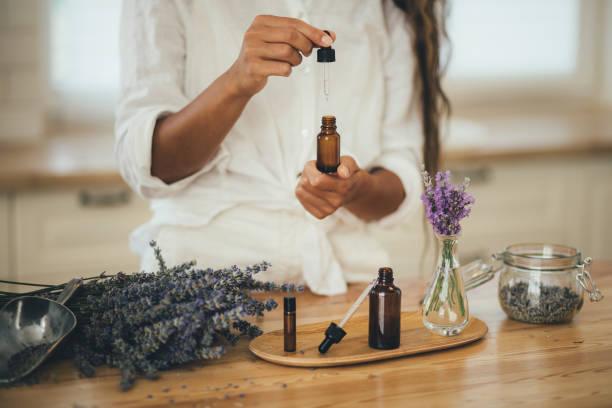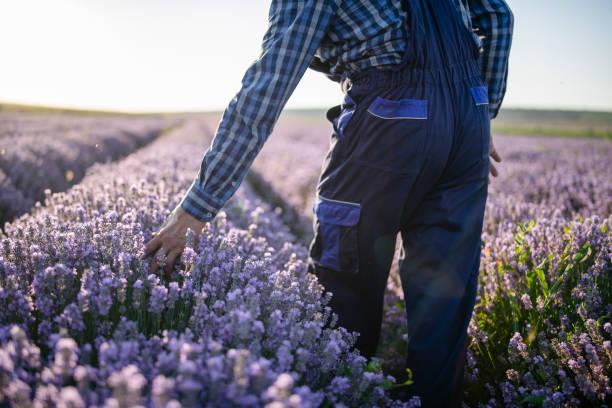Treat your family's everyday ailments with essential oils ? But do you know how to choose your EO? It's crucial to know how to decipher the labels on your essential oil bottles to make sure you're using high-quality products for your health.
What to look for on the label of an essential oil bottle?
You're in the HE section of your organic store or pharmacy and you don't know where to start to choose the right product? The first thing to do is look at the price. An essential oil that's too cheap is likely to be of mediocre quality and won't have the desired effect!
Then scan the labels or cardboard packaging. There are a few things that should catch your eye. For example, the words "H.E.B.B.D." (botanically and biochemically defined essential oil) or the presence of the official "agriculture biologique" or "Nature et Progrès" labels are guarantees of quality.
But the label on a bottle ofessential oil also contains a wealth of information on product quality. We're now going to give you all the clues you need to choose a quality essential oil.
A pure, natural product
When you choose a essential oilThe first thing to check is that you're dealing with a pure, natural product. The only ingredient mentioned must be the essential oil. The words "100% natural" may also appear on the label.
Clearly, your essential oil must not be derived from a synthetic product that is much less, if at all, effective. You should also check that the essential oil you choose is pure.
For example, avoid rectified or deterpenated products. They are better tolerated by the body, but less effective.
Similarly, some essential oils have been fractionated during distillation and are therefore not complete.
Finally, essential oil can be mixed with other products, a trick particularly used when it is very expensive, such as the EO of Checkers rose.

Know the identity card of an essential oil
Knowing the plant used to make the essential oil is extremely important!
This plant must be clearly identified, without any risk of confusion, by its scientific botanical name. This name is in Latin and must conform to international nomenclature. It consists of the name of the genus, followed by the species, and finally the initial of the botanist who first described the plant.
The subspecies and variety can also be mentioned if necessary. It may also be important to know from which part of the plant an EO is extracted (flowers, leaves, roots, etc.).
L’objectif de ces précisions est de vous apporter toutes les informations permettant de distinguer les propriétés des huiles essentielles. Savez-vous par exemple quelles sont les caractéristiques de l’huile essentielle de lavande (Lavandula) ? Ne cherchez pas ! C’est impossible à savoir ! Il est primordial de connaître l’espèce (angustifolia ou latifolia par exemple) pour savoir à quelles fins utiliser une HE de lavande.
The biochemistry of essential oils
Identifying the plant is sometimes not enough to know the properties of an oil. We then need to know the essential oil's chemotype, or biochemical composition, in order to determine the plant's truly active molecules.
Pour certains végétaux, comme le thym et le romarin, connaître le chémotype est la seule façon de connaître avec certitude les propriétés et contre-indications de l’huile essentielle.
Vous reconnaîtrez une HE chémotypée grâce à la présence d’une abréviation HEBBD (Huile Essentielle Botaniquement et Biochimiquement Définie) ou HECT (Huile Essentielle Chémotypée).
The origin of an essential oil: a decisive criterion for making the right choice
The final criterion for selecting a essential oil Essential oils: the origin of plants and how they are grown. Knowing where the plants used to make an essential oil come from is extremely important. Soil quality and climatic conditions have a major influence on the qualities of an essential oil.
Knowing where the plants come from is also a way of ensuring that the product's traceability is guaranteed!
The type of plant cultivation used is also often indicated. The best quality oils are obtained from plants harvested in the wild, and therefore subjected to conditions that enhance their properties.
However, most essential oils come from cultivated plants. In this case, choosing an organic product allows you to limit the presence of pesticides.
Choisir son essential oil Choosing the right essential oil can be a complex process! Don't hesitate to ask a natural health practitioner for advice to help you find your way in the large family of essential oils. HE.




